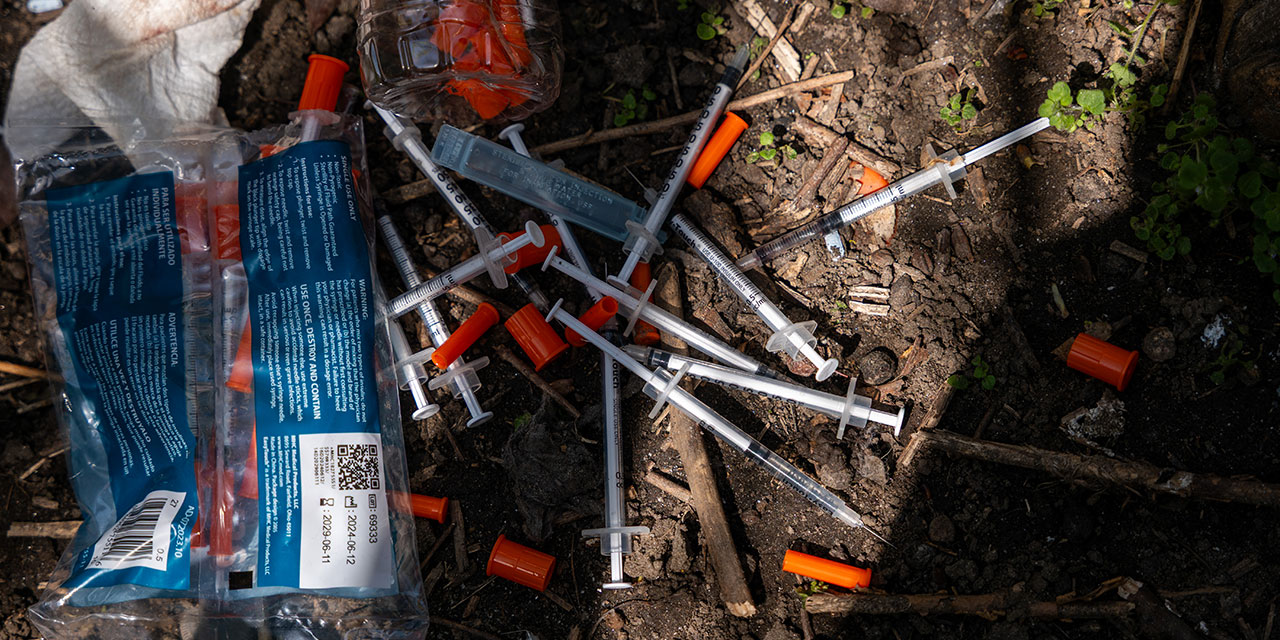
Does compulsory drug treatment even work? That was the challenge on critics’ minds last week after New York City mayor Eric Adams announced a new proposal to compel the city’s addicts into treatment. The New York Times, in a skeptical write-up that cited mostly opponents of the plan, labeled compulsory treatment “often ineffective;” Anne Marie Foster, CEO of a city addiction treatment facility, told NY1, “Forcing people into hospitalization does not work.”
This utilitarian objection, pushed by radical organizations like the Drug Policy Alliance, is rolled out whenever a new jurisdiction experiments with compulsory treatment. It’s a view based more on proponents’ focus on autonomy (and often on their belief that drug use isn’t harmful) than on evidence. The reality is the opposite: a large body of research supports the simple insight that pushing people to get clean helps them more than leaving them to their own devices.
Finally, a reason to check your email.
Sign up for our free newsletter today.
To be fair, that’s not quite the conclusion one gets by skimming the abstracts of systematic reviews of compulsory treatment. One widely cited review—including by the New York Times—finds limited evidence of benefits, “with some studies suggesting potential harms.” It concludes that the damage to individual liberty isn’t worth the gains. Another larger and more recent review from the Canadian Journal of Addiction reported a “lack of high-quality evidence to support or refute involuntary treatment” for substance-use disorder (the technical term for addiction).
The literature on the topic, moreover, is filled with dross. Some studies simply follow cohorts of people during and after involuntary treatment, without comparing them with any sort of control group. Others compare people committed to treatment involuntarily with those who enter treatment voluntarily, without accounting for how these two populations are likely different at baseline. For example, the Canadian review labels one 1996 study as showing that those in compulsory treatment were more likely to return to crime than those in voluntary treatment, even though the study’s authors acknowledged that the compulsory group had more time incarcerated at baseline.
Despite this problem (what social scientists call “selection bias”), many similar quality studies conclude that involuntary treatment does at least as well as voluntary treatment. For example, research finds no significant difference between veterans ordered by a court into alcohol treatment and those entering voluntarily; between Chinese heroin addicts in mandatory detoxification, voluntary detox, and involuntary drug detention; and between Western Canadians who stayed in treatment the same amount of time, whether voluntarily or involuntarily. (Another study in Western Canada also found no statistically significant differences in outcomes between voluntary, involuntary, and nonparticipants.)
Other studies show that the involuntarily committed actually do better on some margins than voluntary participants. Involuntary treatment reduced program drop-out in a large American survey and in a study of female probationers, and reduced substance use among a cohort of adolescents in a third study. Other research compares involuntary treatment with no treatment—the relevant comparison for many of the most treatment-resistant users. One study of parolees found that mandatory treatment temporarily reduced their risk of incarceration relative to the parolee population, and a cross-sectional examination of Thai drug users found that compulsory drug detention was positively associated with drug-use cessation of at least a year.
All these studies are vulnerable to the same selection-bias criticism as those that make compulsory treatment look worse. The subjects in compulsory treatment likely vary from those not in such treatment in a way that hasn’t been controlled. That means we can’t discern the causal effect of compulsory treatment.
Several studies try to cope with this problem by using “propensity score matching” (PSM), which creates a control group by algorithmically matching treated and untreated sample participants on observed characteristics. Studies that do so have found retention benefits to compulsory treatment in pregnant women and older adults. A PSM study of Kansas’s mandatory drug-treatment law found that it reduced recidivism as well as probation services provided by the Kansas Department of Corrections, but less effectively than probation provided by the judicial branch. (The authors attribute this result to selection.) One matching study of a Taiwanese program did find worse outcomes in the involuntary treatment group, but that result may not apply in the United States.
The strongest kind of evidence comes from studies that randomly or quasi-randomly assign participants to receive compulsory treatment or not. One such natural experiment comes from California’s 1960s-era civil commitment program, during which some addicts were released by judicial order almost immediately after commitment. One analysis found that those who were released relapsed and returned to crime at twice the rate of those who stayed. Further randomized evidence comes from a study of alcoholics randomly assigned to compulsory inpatient treatment versus compulsory participation in Alcoholics Anonymous; those who received full, in-patient treatment were significantly less likely to be drinking and using drugs at follow-up.
None of these studies covers the most widely used compulsory programs: drug courts. These programs mandate users into treatment rather than incarceration. As I noted in a 2022 Manhattan Institute report, they reduce recidivism by between 9 percent and 24 percent, as well as reducing drug use. One of the most popular drug-court programs, the Honest Opportunity Probation with Enforcement (HOPE) approach, significantly reduced drug use compared with a control group.
None of this literature is perfect. The caution shown by the Canadian Journal of Addiction authors is not unwarranted for a medical journal. Much of the literature is contaminated by selection bias or poor study design. High-quality studies are few and often old. Results from the best research—on drug courts—may not be generalizable.
But the balance of research is enough to support common sense. People who are addicted to drugs don’t like having to quit, if for no other reason than the unpleasant consequences of withdrawal. Being compelled to quit will, all else held equal, help people kick the habit that makes them a danger to themselves and others.
More importantly, the research is robust enough to counter the activists who claim that compulsory treatment doesn’t work. By most available accounts, it does. Critics’ arguments are mostly a smokescreen—an effort to cloak their moral qualms in the language of scientific objectivity. If they want to have an argument, they should at least be honest about the evidence.
Photo by Spencer Platt/Getty Images
City Journal is a publication of the Manhattan Institute for Policy Research (MI), a leading free-market think tank. Are you interested in supporting the magazine? As a 501(c)(3) nonprofit, donations in support of MI and City Journal are fully tax-deductible as provided by law (EIN #13-2912529).
Source link

















